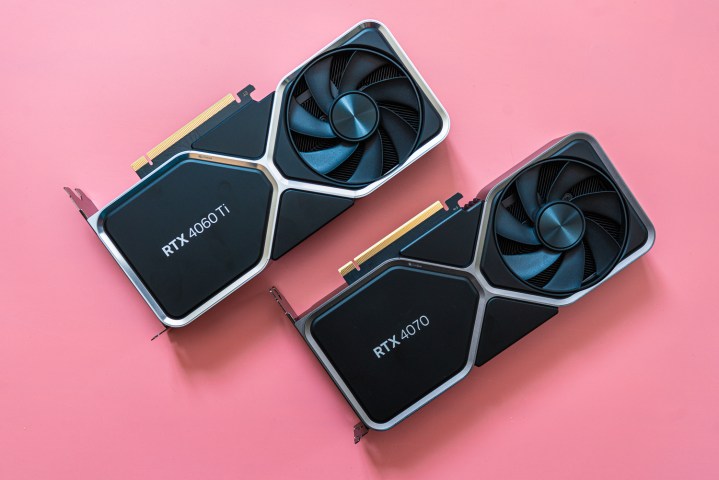
I’m not mad, just disappointed.
Nvidia’s RTX 4060 Ti has aged like milk, and it just released in May. The card was disappointing when it first released, hamstrung by a memory interface that held it back in games released this year. But it has grown even more stale over the course of the year as some of the best graphics cards, both from the last generation and the current one, have fallen in price.
As with any graphics card, you can’t look at it in a vacuum. The RTX 4060 Ti is the most disappointing GPU I’ve reviewed this year, but that doesn’t mean it’s the worst. There are plenty of situations where it might be the best choice for your PC build, but I was hoping for a lot more out of such an important entry in Nvidia’s lineup.
We need to talk about the 8GB

There’s no way around it: 8GB of VRAM is not enough for the RTX 4060 Ti. That’s what the card launched with, and it seems even Nvidia knew that was a problem. Alongside the release, it announced that a 16GB version of the same GPU would arrive a couple of months later.
Being limited to 8GB is a very serious concern in modern games, and one that’s relevant if you’re spending $400 on an RTX 4060 Ti. Take a look at Hogwarts Legacy below as an example. Last-gen’s RTX 3060 Ti is faster. It’s only by 2%, but the RTX 3060 Ti is three years old at this point.
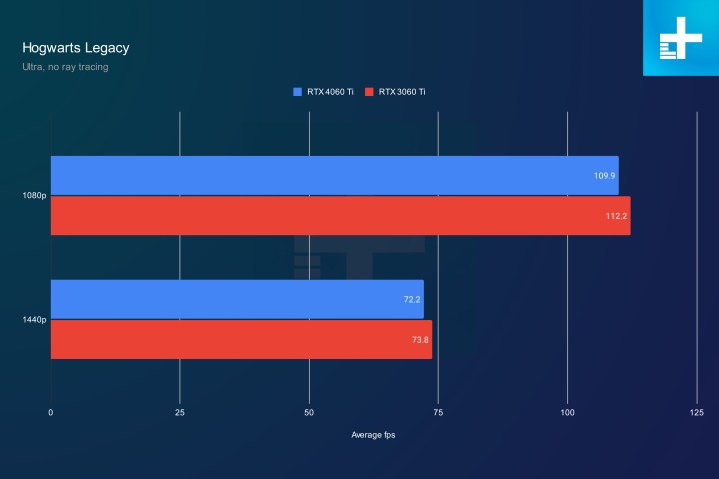
In an extreme example, like The Last of Us Part 1, the RTX 3060 Ti is clearly faster. I didn’t get the names wrong here. The RTX 3060 Ti has the same 8GB of VRAM, but it’s across a wider 256-bit bus, allowing more data to travel from the memory to the GPU at once.
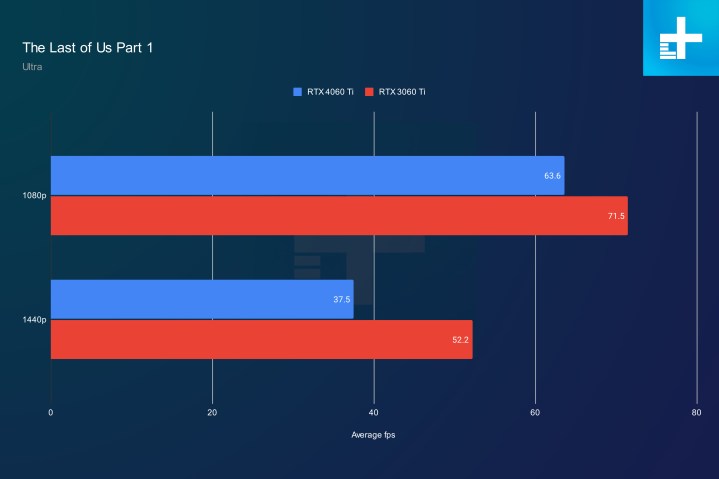
These are two extreme examples, but they show the implications 8GB of VRAM can have when you want to play the latest games, even at 1080p. It’s particularly disappointing when we look at games that aren’t stressing VRAM. In those titles, the RTX 4060 Ti is worth its $400 asking price.

Nvidia marketed the GPU as a 1080p graphics card, and at that resolution, the card is 27% faster than the RTX 3060 Ti on average, nearly matching the performance of the RTX 3070 Ti. That’s a fantastic generational improvement, especially when bolstered by Nvidia’s excellent DLSS 3.
Games like the The Last of Us Part One and Hogwarts Legacy, which are heavily constrained by VRAM, are the problem. At $400, you have an expectation that you’ll be able to play the latest games at the highest settings, maybe even up to 1440p. The RTX 4060 Ti falls short of that expectation, and it’s almost entirely due to VRAM.
It’s so disappointing because there’s clearly a mismatch here between the power of the GPU and its memory interface. It’s the entire memory interface here, too. Even the RTX 4060 Ti 16GB has issues with squeezing so much capacity across a 128-bit bus despite sporting higher capacity.
Same price, new class
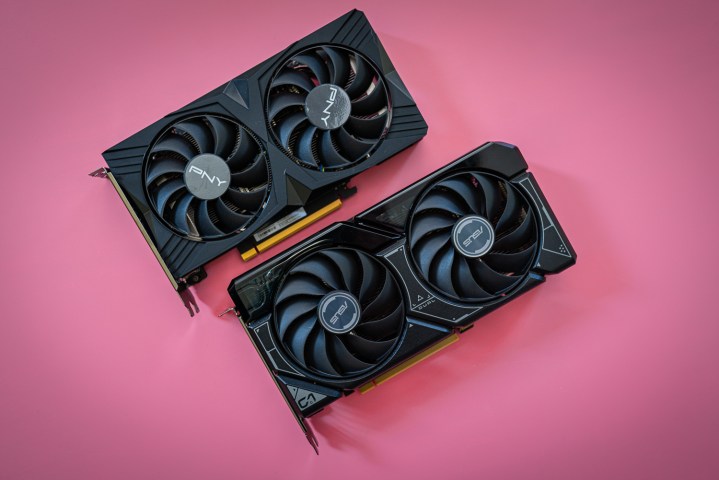
The other disappointing aspect of the RTX 4060 Ti is that it’s a 1080p GPU. Last-gen’s RTX 3060 Ti was targeted at 1440p despite releasing for the same $400 price tag (and during the height of the GPU shortage). Three years and a new generation later, and somehow the same class of GPU is built for a lower resolution.
It’s a shame for the RTX 4060 Ti itself, but even more for GPUs overall. Previously, cards like Nvidia’s RTX 4060 and AMD’s RX 7600, both available around $300, were considered in the premium 1080p segment. Now, you’ll need $400 to get into that class, and with clear caveats when it comes to VRAM.
It’s a step in the wrong direction. Instead of the premium, ray-traced future we can see with cards like the RTX 4070, the RTX 4060 Ti is a step backwards for this class of GPU. Again, that doesn’t mean it’s the wrong GPU depending on your build and budget. But it certainly makes the card disappointing.
Better options
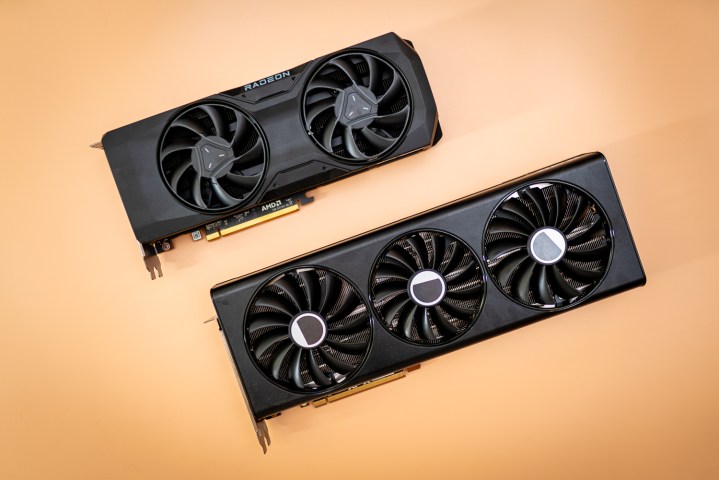
At the end of the year, the RTX 4060 Ti is struggling even more due to its direct competition. I went through Newegg and found three models in stock at the list price of $400, with some some selling closer to $430. At $450, you have AMD’s RX 7700 XT, which is 22% faster on average at 1440p and 17% faster at 1080p. It even manages a lead in ray tracing over the RTX 4060 Ti, and it comes with 12GB of VRAM.
It’s not the same price, but the performance gap is so large that it may as well be. To put this into perspective, the RX 7700 XT was widely considered disappointing in its own right, and it still manages to exceed the bar set by the RTX 4060 Ti.
There’s also the RX 6700 XT from AMD’s previous generation. It gets close in most games, and for around $330. The ray tracing is pretty bad by comparison, but it’s hard to upsell $70 based on that alone.
The unfortunate reality for buyers looking at this price range, though, is that Nvidia has damn good software. We can look at all of the performance and price charts in the world to see how the RTX 4060 Ti falls short of the competition, but that fades away when looking at features like ray tracing and DLSS 3.5. Nvidia has too big of a lead in software.
Maybe that’s what’s most disappointing about the RTX 4060 Ti. With Nvidia’s feature set and efficiency this generation, it could be a stellar GPU with a few tweaks. The fact that it isn’t fails gamers looking for a powerful, mainstream graphics card.
Not a bad year still

Wow, what a bummer, am I right? I don’t want to end on such a down note because we’ve seen some excellent GPUs this year, some of which came from Nvidia. The RTX 4070 has proven itself as a powerhouse for gamers who want a premium experience, but don’t have an endless budget, and AMD’s RX 7800 XT showed that Team Red still has some fight left in it.
We’ve seen great software advances, too, with DLSS 3.5 being key among them. Let’s just hope we see more mainstream cards in 2024, or at the very least, a price drop on the RTX 4060 Ti.
Editors’ Recommendations
Services Marketplace – Listings, Bookings & Reviews
